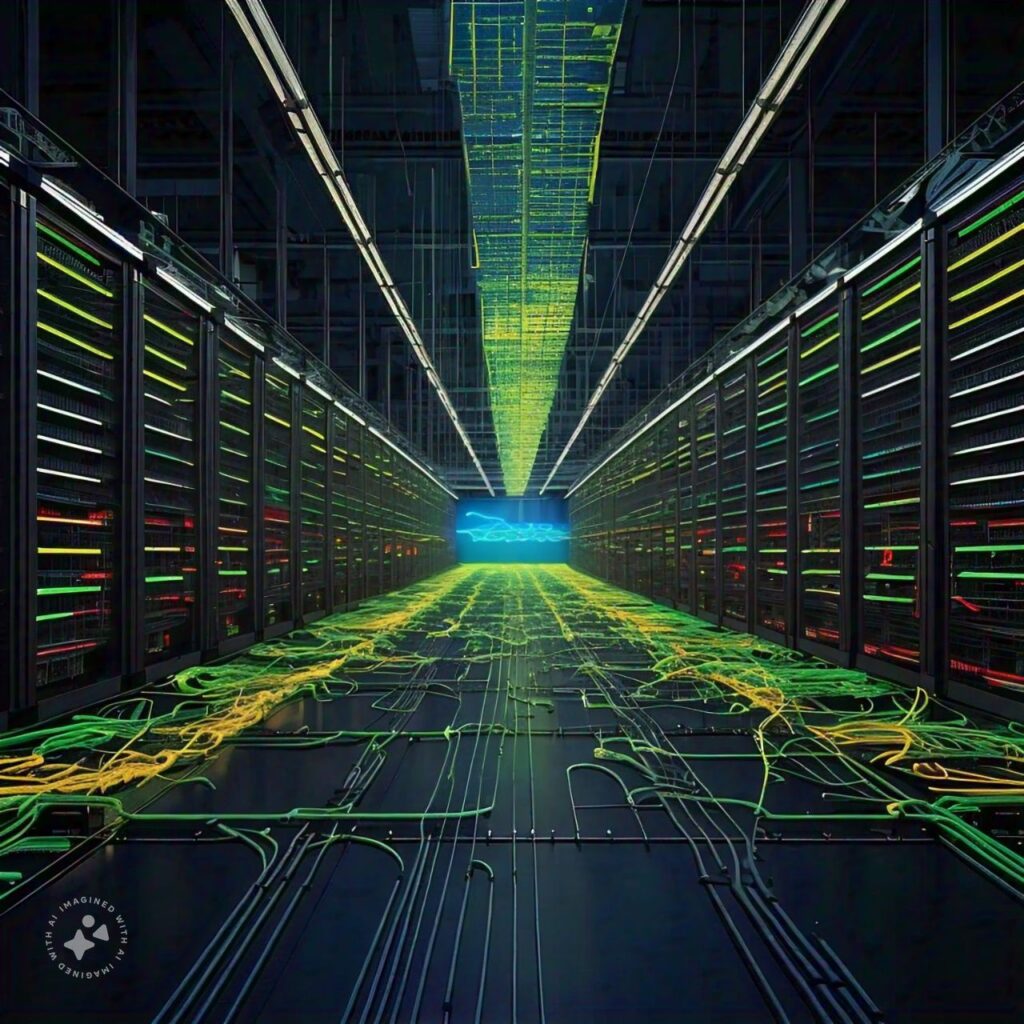In the digital era, cloud computing has become indispensable, providing businesses with scalable resources and reducing the need for physical infrastructure. The rise of cloud services has revolutionized how companies operate, offering flexibility, cost savings, and enhanced efficiency. However, with these benefits come environmental challenges that need to be addressed. This blog post explores the environmental impact of cloud computing services and outlines strategies to mitigate these effects.
The Growth of Cloud Computing and Its Environmental Implications
Cloud computing involves delivering various computing services over the internet, including servers, storage, databases, networking, software, and analytics. While it offers significant advantages, such as cost savings and flexibility, it also brings with it a notable environmental footprint.
1. Data Centers: The Energy Demands
Data centers are the heart of cloud computing, housing vast arrays of servers and storage systems. They play a crucial role in delivering cloud services but require substantial amounts of energy to operate. According to the International Energy Agency (IEA), data centers account for approximately 1-2% of global electricity demand. This figure is significant, especially as the volume of data processed and stored in the cloud continues to grow.
The energy consumption of data centers can be categorized into two main areas:
- Operational Energy: This includes the energy required to run the servers, networking equipment, and other IT infrastructure. As data centers strive to provide uninterrupted service, they must operate 24/7, leading to high energy consumption.
- Cooling Energy: Servers generate a considerable amount of heat, necessitating cooling systems to prevent overheating. Cooling systems, including air conditioning and advanced cooling technologies, add to the overall energy requirements of data centers.
2. Carbon Emissions: The Role of Energy Sources
The carbon footprint of cloud computing is closely linked to the energy sources used by data centers. Many data centers still rely on non-renewable energy sources such as coal and natural gas. This reliance contributes to greenhouse gas emissions and exacerbates climate change.
Efforts are being made to transition data centers towards renewable energy sources. Major cloud providers are investing in wind, solar, and hydroelectric power to reduce their carbon footprint. For example, companies like Google and Microsoft have committed to using 100% renewable energy for their data centers. However, the pace of this transition varies across different regions and providers.
3. Electronic Waste: Managing Hardware Lifecycles
The rapid advancement of technology often results in frequent hardware upgrades and replacements. This creates a significant amount of electronic waste (e-waste). Servers, storage devices, and other components have limited lifecycles and must be disposed of or recycled when no longer in use.
The management of e-waste poses several challenges:
- Proper Disposal: Improper disposal of electronic components can lead to soil and water contamination due to hazardous materials such as lead and mercury.
- Recycling Difficulties: Recycling e-waste involves complex processes to recover valuable materials and ensure environmentally safe disposal. Many components are difficult to recycle, and the recycling infrastructure may not be adequately developed in all regions.
Strategies for Reducing the Environmental Impact of Cloud Computing
Despite the challenges, there are several strategies to mitigate the environmental impact of cloud computing:
1. Choose Sustainable Cloud Providers
Selecting cloud providers with strong commitments to sustainability is a critical step. Look for providers that are transparent about their energy sources and environmental initiatives. Many leading providers are working towards carbon neutrality, investing in renewable energy, and implementing energy-efficient technologies. Providers such as Amazon Web Services (AWS), Google Cloud, and Microsoft Azure have made significant strides in this area.
2. Optimize Resource Utilization
Efficient resource management can significantly reduce the energy footprint of cloud computing. Implement practices such as:
- Auto-Scaling: Automatically adjust computing resources based on demand to avoid over-provisioning and reduce energy waste.
- Resource Consolidation: Combine workloads to maximize the utilization of server capacity and minimize the need for additional hardware.
- Storage Optimization: Regularly review and clean up unused or redundant data to reduce storage requirements.
3. Support E-Waste Management Initiatives
Collaborate with cloud providers that have robust e-waste management programs. Ensure that outdated hardware is disposed of responsibly and that components are recycled or repurposed. Supporting initiatives that promote the safe disposal and recycling of electronic waste can help mitigate the environmental impact of cloud computing.
4. Advocate for Industry-Wide Sustainability
Promote and support industry-wide efforts to improve sustainability in cloud computing. Encourage cloud providers to adopt more eco-friendly practices and support policies that advance renewable energy use, energy efficiency, and better e-waste management. Engaging with industry groups and participating in sustainability initiatives can drive broader changes.
5. Implement Green IT Practices
Adopt green IT practices within your organization to complement cloud sustainability efforts. This includes energy-efficient office equipment, reducing paper usage, and promoting remote work to lower the carbon footprint associated with commuting.
Conclusion
As cloud computing continues to evolve and expand, its environmental impact remains a critical consideration. By choosing sustainable cloud providers, optimizing resource usage, supporting responsible e-waste management, and advocating for industry-wide changes, businesses and individuals can contribute to a more sustainable future for cloud computing. Balancing technological innovation with environmental responsibility is key to ensuring that the benefits of cloud computing do not come at the expense of our planet.
Embracing these strategies will not only help reduce your environmental footprint but also support the broader goal of creating a greener, more sustainable digital future.


